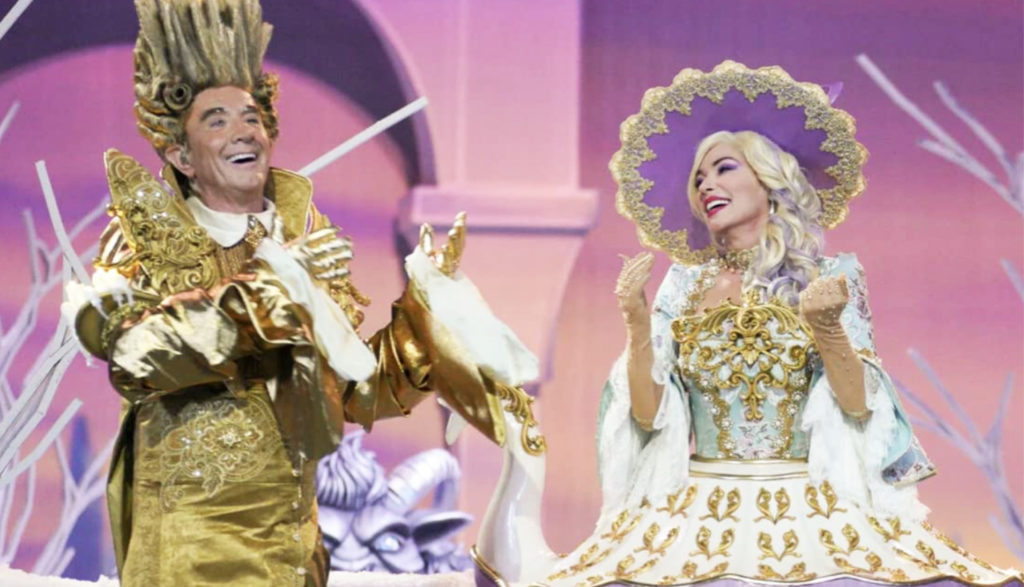
Alright. Let’s do this one more time.
If you were to meet her, you might assume that Belle was the origin of the phrase “belle of the ball.” She’s sweet and kind, and she always has her face buried in a book. But Bookworm and the Beast isn’t what we’re watching. No, Belle’s beautiful, too. In fact, her beauty kind of astounds the rest of her town; even though they think she’s otherwise actually rather odd, they can’t deny that she’s got looks that cause birds to sing.
Well, the town’s most handsomest man, Gaston, wouldn’t mind shooting a few of those birds and cooking them in a nice roast. And then, because Belle’s just so lucky, he might even give her the honor of eating some of it—if she marries him. Pfft. “If.” Of course she’ll marry him; he’s the five-dozen-egg-eating Gaston!
But as it turns out, Belle isn’t interested in Gaston. Sure, he looks the part of Prince Charming. But his brutish and selfish personality leaves a sour taste in her mouth. Still, Gaston’s so macho, he just knows that if he’s relentlessly persistent, eventually Belle will surely come to her senses! I mean, he’s Gaston!
And if that isn’t enough on Belle’s plate, soon her father’s horse returns without him. And she manages to track him down to the spookiest castle west of the Seine—one that’s got the terrible Beast in it.
Beast is willing to let her father go, of course—if she takes his place as Beast’s prisoner. It’s a terrible fate, she surmises—until he starts to slowly but surely turn a new leaf. And as she spends more time with Beast, she starts to think that perhaps she judged his outward appearance a bit too harshly.
The ultimate moral of Beauty and the Beast remains: True beauty comes from within. While Beast is horrifying to look at, his true and kind personality begins to shine through once Belle gets through to him. Meanwhile, though Gaston may be physically attractive, the film reveals that his self-serving and cruel personality makes him the monster, not Beast.
And though Beast was turned into his monstrous form because he was “spoiled, selfish and unkind,” and because he was repulsed by the enchantress’ ugly appearance, we’re reminded that it isn’t just Beast who holds such tendencies. The rest of the village espouses the same views when they see Beast. All in all, this story can serve as a reminder to not judge hastily or according to appearance, but to judge with righteous judgment (John 7:24, Acts 17:11-12).
Beast’s biggest turn of heart comes when he allows Belle to leave the castle in order to save her father. Though he knows it may ruin his last chance to be turned back into a man, he allows her to leave because he loves her and would rather Belle be truly happy.
The film also takes time (during the live-action portion of it—more on that below) to give credit to the people who worked behind the scenes to bring the fantastical story to life. That includes a touching tribute to Angela Lansbury, the original voice of Mrs. Potts, who passed away earlier this year.
As the story goes, an enchantress turned a selfish prince and his castle servants into the Beast and sentient objects. Unless someone confesses genuine love for the Beast before a magical rose wilts, he will remain a Beast forever. There’s also a magical mirror in play.
We hear various outbursts related to Christianity: “Praise the Lord,” “Say a prayer,” “Heaven’s sakes,” and “It’s a pity and a sin.”
Live-action dancers who are meant to portray rose petals move sensually in tight, revealing outfits. The men in the dance are shirtless. The live-action Gaston rips the top of his shirt open to reveal his chest hair, singing, “Every last inch of me’s covered in hair.” The live-action Belle wears a dress that reveals her cleavage.
Furthermore, the 2017 live-action version of Beauty and the Beast indicated that LeFou was romantically attracted to Gaston. While he remains his same eccentric self in this adaptation, there’s no direct indication that absolutely confirms that attraction here, though he does still seem to be quite enthralled by Gaston’s manliness.
Most violence in the film takes place in the original animated version: Beast is stabbed with a knife and shot with an arrow. A man falls to his (unseen and presumed) death. An angry mob of villagers is smacked about by sentient objects.
We do see some violence in the live-action version, too. Belle is attacked by wolves, and the Beast strikes them down in choreographed fashion. LeFou pulls out an arrow stuck in his rear (to no ill effect), and he is also hit in the head and has his hand crushed by a mug.
God’s name is misused twice.
We hear a reference to wine. LeFou asks if Gaston wants more beer to drink, and he also wakes up intoxicated men in a bar.
Gaston’s manipulative behavior towards Belle and everyone else around him is obviously narcissistic and boorish. Furthermore, Gaston attempts to blackmail Belle into marrying him by trying to lock her father in an insane asylum until she agrees to his forced proposal.
You saw the animated version of Beauty and the Beast three decades ago. Then, in 2017, you saw the live-action reboot. Now, what’s left but to make another reboot that uses both modes of storytelling?
Beauty and the Beast: A 30th Celebration presents “the animated movie we all know and love with the musical numbers reimagined as live-action spectacles.” Roughly, that means that we’ll watch the original animated movie, but when a song starts playing, we’ll shift to actual actors singing and dancing around a large stage filled with props and surrounded by cheering spectators.
Perhaps the biggest draw of this version is that the film is occasionally interrupted by insights into how the story came to be—from pencil to screen. It also includes interviews with cast members of this live-action celebration.
Because the film follows in the footsteps of its animated predecessor, there’s not much of concern here if you had no problem with that one—save for one of the live-action dances, where dancers representing rose petals wear tight, small outfits and dance sensually. For those wondering, those dancers are the main reason we set our Kids Content Caution to “Medium.”
This version of the film arguably sidesteps the controversy surrounding LaFou’s same-sex attraction to Gaston that we saw in the 2017 version. LaFou certainly fawns over his brawny friend somewhat suggestively, but the film never confirms or denies exactly what that behavior indicates about this adoring sidekick’s sexuality.
What we’re left with, then, is a hybrid celebration of the film brings us back to one of the most beloved animations of the Disney Renaissance era, giving us a bit more insight into its creation and remaining generally true to its storyline roots.


Kennedy Unthank studied journalism at the University of Missouri. He knew he wanted to write for a living when he won a contest for “best fantasy story” while in the 4th grade. What he didn’t know at the time, however, was that he was the only person to submit a story. Regardless, the seed was planted. Kennedy collects and plays board games in his free time, and he loves to talk about biblical apologetics. He thinks the ending of Lost “wasn’t that bad.”